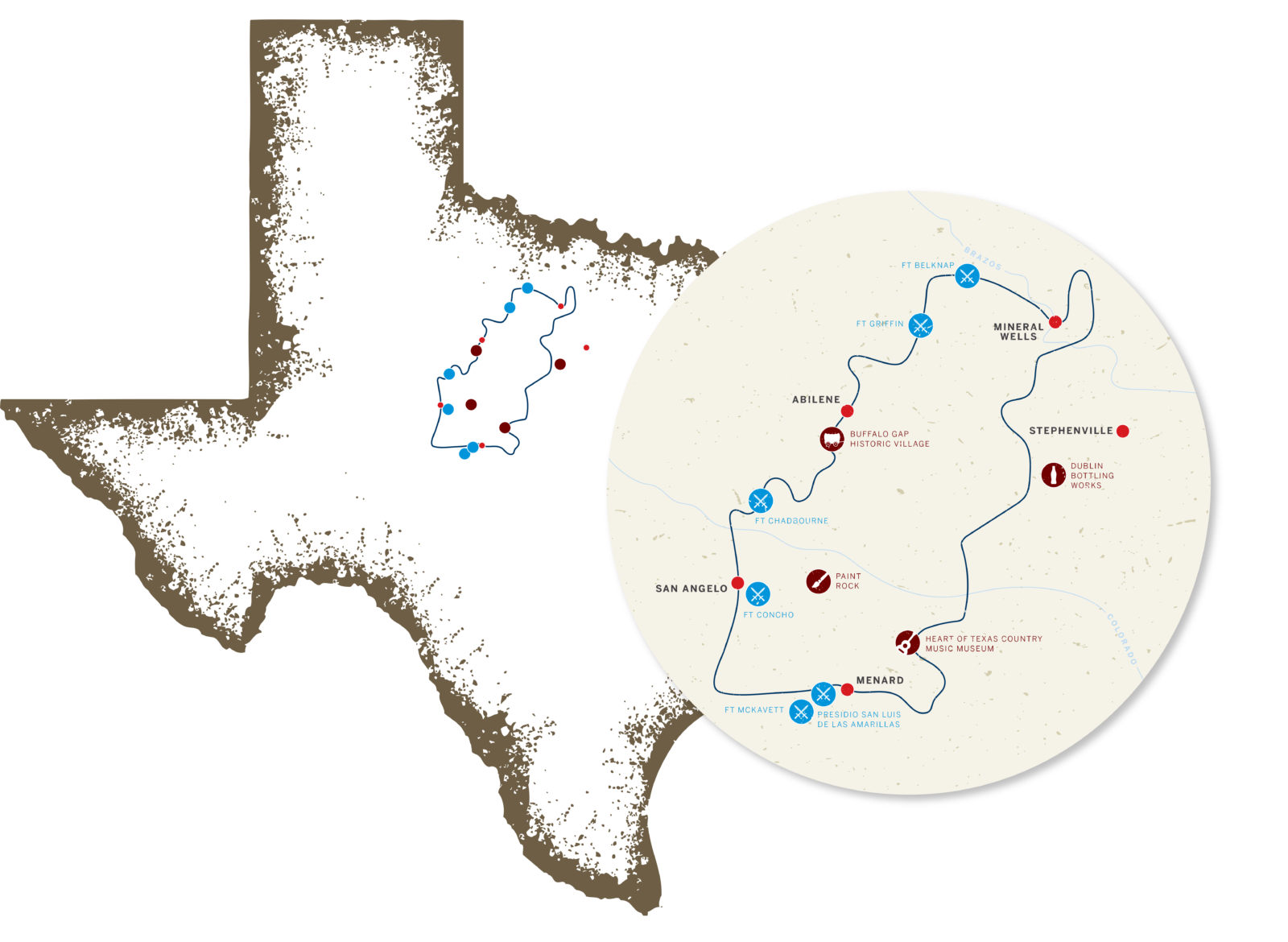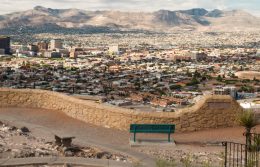Your Guide to Texas’ Historic Forts Trail
In Western movies, the story of the Texas frontier is often portrayed against foreign backdrops: Utah’s Monument Valley, California’s Mojave Desert, and, in spaghetti westerns, even southern Italy.
But to see the real landscape that made Texas cowboys and Texas rangers famous, you’ll have to head down to Texas’ historic Forts Trail. The trail, which stretches roughly from the upper branches of the Brazos River to the northwestern edge of the Hill Country near San Angelo, passes along a part of the state that was once the very frontier of American westward expansion.
Preserving Texas’ Earliest History
From 1848 to 1900, the U.S. Army built 44 military outposts and set up more than 100 temporary camps along the frontier to protect settlers and trade routes and fight back Native Americans. Today the region is dotted with historic forts, ruined homesteads, Spanish presidios, and the sites of historic battles and skirmishes.
The Texas Historical Commission’s Texas Heritage Trails Program designed a 650-mile driving loop that guides visitors through the region, offering the opportunity to take in its history, explore current-day life, and savor beautiful landscapes in a region that is truly the heart of Texas.

Part I: Mineral Wells to Fort Belknap
Start your journey about an hour west of Fort Worth in Mineral Wells, where the discovery of a mineral spring in the late 1800s led to the town being transformed into a resort and spa destination for the cities to the east.
From there, you can pass through the country made famous by cattleman Charles Goodnight, who drove his herds along trails located close to Fort Belknap, near the town of Newcastle. The fort, established in 1851, was the northernmost establishment in the frontier network of forts and housed troops who protected the Butterfield Overland Mail route as well as newly arrived settlers. Today, remains of the fort include a museum and the grounds have been turned into a park.
Part II: Fort Griffin to the Brazos
The next stop is Fort Griffin State Historic Site, which is located near Albany, about 15 minutes’ drive to the southwest. The ruined fort includes remnants of a mess hall, barracks, sergeant’s quarters, and a hand-dug well. But the site’s main appeal today is the welcoming campgrounds along the banks of the Brazos and the fact that it is the home of the Official State of Texas Longhorn herd.
Part III: Abilene to the Frontier
Continuing farther west, you will arrive in Abilene. The town boomed after the Texas and Pacific Railway was routed through the area in the 1880s; and in the subsequent decades, it became a center of culture on the frontier. Today, theater groups, ballet companies, art museums, and an opera association all program events throughout the year.
For families traveling with children, don’t miss Abilene’s National Center for Children’s Illustrated Literature, which includes exhibitions dedicated to the beloved art in children’s books. The Grace Museum boasts a strong American art collection with an emphasis on Texas artists. And Abilene, like many towns in the region, hosts rodeos throughout the year, where you can see modern-day cowboys strut their stuff.
If you follow U.S. Route 277 southward from Abilene, you will trace the edge of what was once the Texas frontier. The wide-open expanse of gently rolling rugged terrain, punctuated by distant mesas and limestone ridgelines, is enough to evoke a feeling of the time when the landscape was untamed and settlers, soldiers, cowboys, and Native Americans roamed its wilds.
Part IV: Buffalo Gap to Fort Chadbourne
One of the first sites you will encounter south of Abilene is the Buffalo Gap Historic Village, which offers a chance to see life on the frontier as it was once lived. The tiny village functions as a living museum, and you can explore a reconstructed doctor’s office, barbershop, railroad depot, bank, post office, print shop, and private homes.
Farther on in Bronte, Fort Chadbourne is a small, once-neglected fort site that has been embraced by a local historical society and transformed into a small museum that tells the story of the fort’s role in the history of the frontier.
Part V: Paint Rock to Fort Concho
Before arriving in San Angelo, the next major stop along the route, swing by Paint Rock. The historic Native American site features remarkably preserved cave paintings, which offer insight into and a reminder of the cultures that thrived in the region for thousands of years before white settlers arrived.
San Angelo grew into a major western outpost with the arrival of the railroad, but before then it was home to Fort Concho, an important military outpost that protected encroaching settlers against Native American inhabitants. The Fort Concho National Historic Landmark includes barracks, headquarters, and residents that now serve as a museum to interpret that history, including the story of the 10th Cavalry Regiment, also known as the Buffalo Soldier regiment, which was stationed at the fort.
In San Angelo, you will also find the Tule Princess Steamboat, which offers the opportunity to ride on the only full-size, still-operational side-wheel paddle steamboat in the world.
Part VI: Presidio de San Sabá and Fort McKavett
The history of the Texas frontier predates the settlers and cowboys who skirmished with Native Americans in their persistent drive across the state. In the 1700s, Spanish settlers were the first to arrive from Europe, and they established a presidio and Franciscan mission near the tiny of town of Menard. Today, travelers can visit the ruins and the nearby Fort McKavett State Historic Site, which preserves the post established in 1852 to protect westward migrating settlers.
Part VII: Back to the Present
From here on out, the route passes through a string of Texas sites that tell the story of more recent state history. Following U.S. Highway 190 back east brings you through Brady, where the Heart of Texas Country Music Museum interprets the careers and legacies of more than 100 country music artists.
In Dublin, visitors can drop by the location of the original Dublin Bottling Works, which draws upwards of 70,000 pilgrims a year who seek out the place where Texas gave the world Dr Pepper.
Finally, there is perhaps no better place to end your tour of the Texas frontier than in Stephenville, which is home to the Cowboy Capital Walk of Fame. You won’t find many Hollywood names here, just the names of the real-life, unsung heroes who worked the cattle trails that established the frontier, helping make Texas the great state that it is today.
Ready to hit the road? Don’t leave without the ultimate Texas road trip playlist.
Call your local Texas Farm Bureau Insurance Agent to make sure you have the right coverage for the road ahead.
Coverage and discounts are subject to policy terms and qualifications and may vary by situation. © 2018 Texas Farm Bureau Insurance



